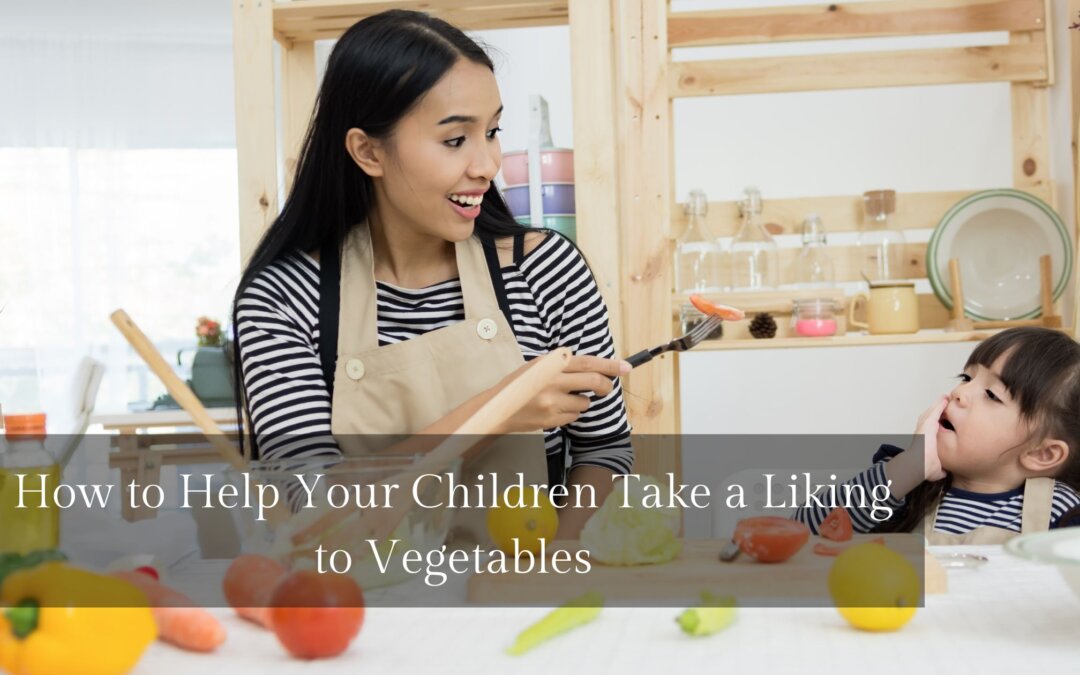For many parents, getting their kids to eat veggies can be a difficult endeavor. However, instilling healthy eating habits early in life is crucial for their long-term well-being. Here are some effective strategies to help your children develop a liking for vegetables.
Lead by Example
Children often mimic their parents’ behaviors, so it’s essential to demonstrate a positive attitude towards vegetables yourself. Add a range of veggies to your own dishes and be open about how much you enjoy them. This will create a positive association with vegetables in your child’s mind and make them more willing to try new options.
Make Vegetables Fun and Appealing
Transforming vegetables into visually appealing and exciting dishes can capture your child’s interest. Try experimenting with different cooking techniques like roasting, grilling, or stir-frying to improve flavors and textures. Additionally, let your kids help prepare meals by letting them pick out vegetables at the grocery store or help with basic cooking duties like chopping or washing.
Offer Variety and Exposure
From a young age, expose your child to a variety of vegetables to help them develop a wider palate. Include colorful and diverse options such as carrots, bell peppers, broccoli, and sweet potatoes. Offer vegetables in various forms, including raw, cooked, steamed, or blended into smoothies. Consistent exposure to different vegetables increases the likelihood of acceptance over time.
Be Patient and Persistent
It’s normal for children to be hesitant about trying new foods, including vegetables. Be patient and continue offering vegetables regularly, even if your child initially rejects them. Instead of pressuring them to eat everything on their plate, encourage them to take tiny bites and acknowledge their efforts. Emphasize the benefits of trying new foods.
Incorporate Vegetables into Familiar Dishes
Incorporating vegetables into familiar dishes that your child already enjoys can make them more receptive to trying new flavors. Add finely chopped or grated vegetables to casseroles, pizza toppings, and pasta sauces. Sneak vegetables into sandwiches, wraps, or quesadillas for a nutritious boost without altering the taste significantly.
Make Mealtimes Enjoyable and Stress-Free
To ensure that your child has a pleasant mealtime experience, set up a calm and cheerful environment. Avoid using vegetables as a bargaining chip or forcing them to eat specific foods against their will. Instead, focus on fostering a healthy relationship with food by providing nutritious options and allowing your child to make choices within reason.
Offer Healthy Dips and Sauces
Pairing vegetables with tasty dips or sauces can enhance their appeal and make them more enjoyable for children. Serve sliced vegetables with hummus, yogurt-based dips, or homemade salsa for added flavor and texture. Experiment with different dip options to find combinations that appeal to your child’s taste preferences.
Celebrate Successes and Progress
Celebrate small victories and milestones along the way as your child becomes more open to trying and enjoying vegetables. Praise their efforts and acknowledge their willingness to explore new foods. Encourage positive associations with vegetables by highlighting the benefits they provide for growing bodies and overall health.
It takes time, effort, and inventiveness to help your kids grow to love vegetables gradually. You can help your child develop healthy eating habits for years to come by setting a good example, making veggies fun and appealing, providing variety and exposure, and fostering a happy mealtime environment. Remember to celebrate successes and progress along the way, and above all, enjoy the journey towards raising a healthy, happy eater.
